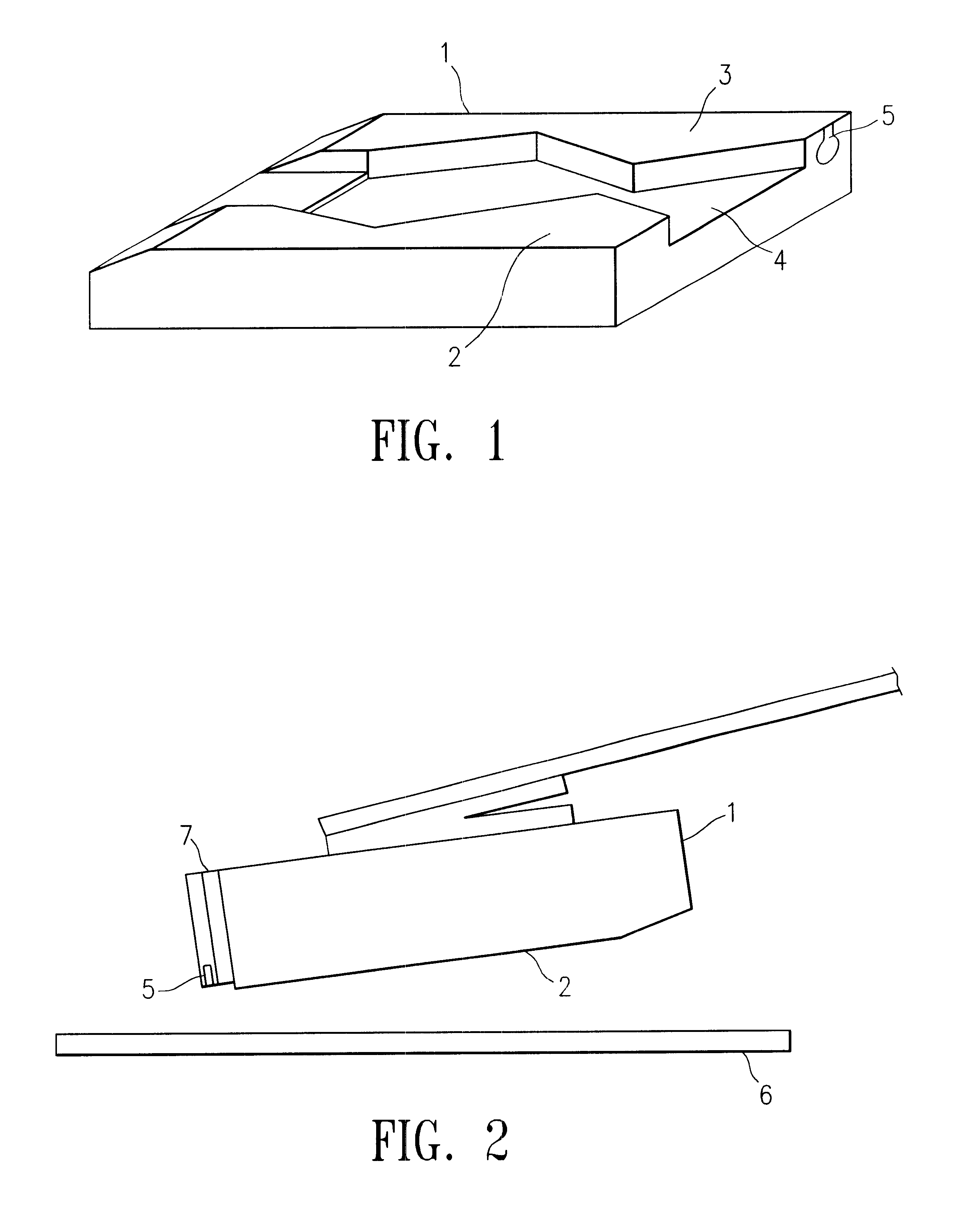Silicon carbide substrate for forming magnetic head
a silicon carbide substrate and magnetic head technology, applied in the field of magnetic head, can solve the problems of deteriorating head performance, voids in polished surfaces, and steps on substrate surfaces that are easy to occur after machining
- Summary
- Abstract
- Description
- Claims
- Application Information
AI Technical Summary
Benefits of technology
Problems solved by technology
Method used
Image
Examples
embodiment 1
Silicon carbide powder was used which was synthesized in accordance with the Acheson's method, contained 2 wt % of free silica, and 0.3 wt % of free carbon, and had a mean crystal grain size of 0.5 .mu.m. Boron-carbide powder having a mean crystal grain size of 0.8 .mu.m was blended with the silicon carbide powder at various ratios and mixed in a polyethylene vessel with a ball mill by using a polyimide ball. An organic solvent in which a phenol resin having a carbonization rate of 40% was dissolved was added to the mixed powder, then the organic solvent was removed and granulated. The granulated matter was crammed into a carbon mold and hot-press-baked for 1 hr in an argon atmosphere while being pressured at 30 Mpa to obtain a sintered body having a diameter of 40 mm.
The obtained sintered body was mirror-polished and the density of the sintered body was measured through the Archimedes' method to obtain a relative density by assuming the theoretical density as 3.20 g / cm.sup.3. The q...
embodiment 2
An amorphous alumina layer was formed on a substrate (surface roughness Ra of 9 .ANG.) of sample No. 4 of Embodiment 1 through sputtering by using a alumina having a purity of 99.5% as a target. Thereafter, the substrate was mirror-machined with a polishing solution obtained by suspending spherical-alumina impalpable powder in demineralized water. Finally, the substrate was precision-machined with a polishing solution obtained by suspending spherical-ceria impalpable powder in demineralized water to produce an amorphous alumina layer having a surface roughness (Ra) of 3 .ANG. and a thickness of 1 to 25 .mu.m.
Film separation after heat treatment and ordinary-temperature resistance if these 3 samples were measured and the result thereof are shown in Table 4.
For film separation after heat treatment, separation at the stage of film formation was observed by a differential interference microscope (at a magnification of 50) by heating each sample in a vacuum atmosphere at a temperature of...
embodiment 3
An amorphous alumina layer was formed through sputtering by using the substrate of sample No. 4 of Embodiment 1 having a surface roughness of 9 .ANG. and using alumina having a purity of 99.5% as a target as shown in Table 3. Thereafter, the substrate was mirror-machined with a polishing solution obtained by suspending spherical-alumina impalpable powder in demineralized water and then finally precision-machined with a polishing solution obtained by suspending spherical-ceria impalpable powder in demineralized water to form first amorphous alumina layers having a thickness of 1 to 2 .mu.m and a surface roughness (Ra) of 3 .ANG. as sample Nos. 1 to 7.
Thereafter, as shown in Table 3, second amorphous alumina layers having various thicknesses were formed through ECR sputtering. Moreover, a case of forming an amorphous alumina layer through normal sputtering instead of the second amorphous alumina layers is shown as sample No. 1.
Layer separation, resistance, and surface roughness after ...
PUM
 Login to View More
Login to View More Abstract
Description
Claims
Application Information
 Login to View More
Login to View More - R&D
- Intellectual Property
- Life Sciences
- Materials
- Tech Scout
- Unparalleled Data Quality
- Higher Quality Content
- 60% Fewer Hallucinations
Browse by: Latest US Patents, China's latest patents, Technical Efficacy Thesaurus, Application Domain, Technology Topic, Popular Technical Reports.
© 2025 PatSnap. All rights reserved.Legal|Privacy policy|Modern Slavery Act Transparency Statement|Sitemap|About US| Contact US: help@patsnap.com


